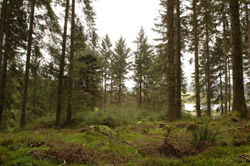Summary
Summary

This study is developing a prototype optimal rotation length model which could be applied in a multi-stand / Continuous Cover Forestry (CCF) setting and that integrates a range of forest ecosystem services and benefits. The report presents results of a literature review on economic approaches to modelling CCF. It then develops a prototype model an age-class model of a multi-stand forest and provides initial results from the model based upon numerical analysis of optimal harvesting decisions. The project will contribute to more comprehensive comparisons between management alternatives in terms of net present values, rotation lengths and production volumes.
Research objectives
Specific objectives of this study are to:
- Understand better multi-stand / CCF approaches to forest management and their benefits.
- Consider existing approaches to economic modelling of CCF and multi-age and multi-species forest stands and make recommendations on which are most suitable.
- Develop a prototype optimal rotation length model that accounts for timber production, carbon sequestration and potentially other ecosystem services (ES) provided by forests in a multi-stand/CCF setting.
Results so far
The review shows that there many benefits are associated with diverse multi-stand mixed-species forests providing multiple ecosystem services. There are also a range of existing tools and economic models that can help to manage such mixed forests optimally.
The review of the economic literature showed that there are currently three major approaches to modelling optimal management of uneven-aged forests:
- forest age-class models;
- modified or generalised Faustmann models;
- matrix models.
Of the three approaches, matrix models, is the most widely cited and applied. However, it is also the one requiring the most advanced growth models, harvesting cost models and detailed forest inventory data. Due to current model and data limitations, it was decided to proceed initially with development of –a prototype forest age-class model.
The review also considers terminology and the definition of different forest types, including CCF.
The final report is available below under ‘Downloads’.
Status
Project started in 2016. The final report is expected to be published in 2018.
Contact
Funders and partners
Funded by Forestry Commission. Research Programme 4: Valuing and governing forest ecosystem services
Forestry Commission policy
The Forestry Commission wants to understand links between trees, woodlands and society to enable them to increase the benefits people receive from trees and woodlands, in both rural and urban environments. It seeks to deliver these benefits through Sustainable Forest Management policies and practices. This study contributes to realising the full potential of our woodlands as economic, environmental and social resources.
